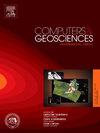Seismic random noise attenuation using structure-oriented 3D curvelet transform
IF 4.4
2区 地球科学
Q1 COMPUTER SCIENCE, INTERDISCIPLINARY APPLICATIONS
引用次数: 0
Abstract
Sparse constraints based on curvelet transform have been widely applied in seismic noise suppression. Traditional schemes usually adopt global or multi-scale thresholding to constrain the coefficients corresponding to noise, which may ignore the structural characteristics and result in signal distortion. It is usually challenging to balance noise suppression and signal preservation. To address this problem, we develop a structure-oriented 3D denoising method based on the 3D curvelet transform, which uses dip information to analyze the complexity of local features. The non-stationary thresholding scheme based on local complexity is implemented, providing strong constraints for low-complexity data to suppress noise and weak constraints for high-complexity data to protect signal. Furthermore, the coarse scale coefficients are insensitive to noise interference; only the fine-scales coefficients are constrained in our proposed scheme. Numerical tests on synthetic and field data demonstrate that the proposed method has better denoising performance for large dip feature data than the conventional global and multi-scale thresholding schemes.
面向结构的三维曲线变换地震随机噪声衰减
基于曲线变换的稀疏约束在地震噪声抑制中得到了广泛的应用。传统的方案通常采用全局或多尺度阈值来约束噪声对应的系数,这可能会忽略结构特征,导致信号失真。在噪声抑制和信号保持之间取得平衡通常是一个挑战。为了解决这一问题,我们开发了一种基于三维曲线变换的面向结构的三维去噪方法,该方法利用倾角信息分析局部特征的复杂性。实现了基于局部复杂度的非平稳阈值方案,对低复杂度数据提供强约束抑制噪声,对高复杂度数据提供弱约束保护信号。此外,粗尺度系数对噪声干扰不敏感;在我们提出的方案中,只有精细尺度的系数受到约束。综合数据和现场数据的数值试验表明,该方法对大倾角特征数据的去噪性能优于传统的全局和多尺度阈值方法。
本文章由计算机程序翻译,如有差异,请以英文原文为准。
求助全文
约1分钟内获得全文
求助全文
来源期刊

Computers & Geosciences
地学-地球科学综合
CiteScore
9.30
自引率
6.80%
发文量
164
审稿时长
3.4 months
期刊介绍:
Computers & Geosciences publishes high impact, original research at the interface between Computer Sciences and Geosciences. Publications should apply modern computer science paradigms, whether computational or informatics-based, to address problems in the geosciences.
 求助内容:
求助内容: 应助结果提醒方式:
应助结果提醒方式:


